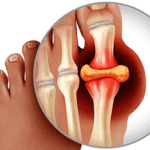How to Prevent Arm Injuries in the Workplace
Preventing arm injuries in the workplace is essential for both employee well-being and organizational productivity. Arm injuries, particularly repetitive strain injuries (RSIs), musculoskeletal disorders (MSDs), and trauma due to accidents, can lead to significant downtime, reduced work capacity, and increased healthcare costs. The good news is that these injuries are largely preventable with the right ergonomic practices, safety measures, and employee education. This article explores effective ways to prevent arm injuries at work, including FAQs to address common concerns.
Understanding Common Arm Injuries in the Workplace
- Repetitive Strain Injuries (RSIs): These result from repetitive motions, such as typing or manual labor, that strain the muscles, tendons, and nerves in the arms. Examples include tendinitis, carpal tunnel syndrome, and tennis elbow.
- Musculoskeletal Disorders (MSDs): Injuries affecting the muscles, joints, and bones, especially in jobs that involve heavy lifting or prolonged awkward postures.
- Traumatic Injuries: These include fractures or dislocations caused by slips, falls, or impacts from equipment and machinery.
- Cubital Tunnel Syndrome: Caused by prolonged elbow flexion or resting on hard surfaces, leading to compression of the ulnar nerve.
Key Ergonomic Strategies for Injury Prevention
- Workstation Design: Ensure that workstations allow for a neutral posture, keeping the arms close to the body with wrists straight. Positioning monitors at eye level and keeping keyboards and mice within reach can minimize strain on the arms.
- Tool Design and Usage: Use ergonomically designed tools that reduce awkward postures and excessive force. Tools that are well-fitted to the worker’s hand reduce strain on the arms and wrists.
- Regular Breaks: Encourage employees to take frequent breaks to stretch and change positions. Micro-breaks can alleviate muscle fatigue and prevent overuse injuries.
- Adjustable Equipment: Providing adjustable chairs, desks, and tools enables workers to customize their workspace to fit their bodies, reducing the risk of strain injuries.
Safety Practices for Physical Jobs
- Safe Lifting Techniques: When lifting heavy objects, employees should bend at the knees and not the waist, keeping objects close to the body to avoid straining the arms.
- Use of Assistive Devices: For heavy or repetitive lifting tasks, use mechanical aids such as dollies or hoists to reduce the load on the arms.
- Wear Protective Gear: Workers in environments with machinery or tools should wear gloves and sleeves that offer protection from cuts, impacts, and chemical exposure.
Training and Education
- Ergonomic Training: Regular ergonomic assessments and training sessions help workers learn safe postures, movements, and lifting techniques. Employees should understand the importance of posture, frequent stretching, and using equipment properly.
- Awareness of Body Mechanics: Educating employees on how their body moves and the risks of improper posture helps prevent common injuries like RSIs and tendinitis.
Creating a Culture of Safety
- Safety Audits: Conduct regular workplace audits to identify potential hazards that could lead to arm injuries. Regular risk assessments help mitigate dangers before injuries occur.
- Open Communication: Encourage employees to report hazards or discomfort early on so that preventive measures can be implemented.
- Reward Safe Behavior: Recognizing and rewarding employees who follow safety protocols fosters a culture of injury prevention.
Frequently Asked Questions (FAQs)
Q: What is the most common cause of arm injuries in the workplace?
A: Repetitive motions, overexertion, and poor ergonomics are the most common causes of arm injuries. Workers who perform repetitive tasks, lift heavy objects, or work in awkward positions are at higher risk of developing RSIs and MSDs.
Q: How can ergonomics prevent arm injuries?
A: Ergonomics focuses on designing workspaces and tools to fit the worker’s body, reducing strain on muscles and joints. Proper ergonomics helps maintain a neutral posture, preventing injuries like tendinitis, carpal tunnel syndrome, and other repetitive strain injuries.
Q: What are some warning signs of a potential arm injury?
A: Early signs of arm injuries include pain, stiffness, tingling, numbness, and weakness in the arm, wrist, or hand. If these symptoms occur, it’s important to take breaks, adjust the workspace, and consult with a health professional if needed.
Q: What should I do if I suspect an arm injury at work?
A: If you suspect an arm injury, report it immediately to your supervisor and seek medical attention. Resting the affected arm and applying ergonomic adjustments can prevent the injury from worsening.
Q: How often should employees take breaks to prevent arm fatigue?
A: Employees should take short breaks every 30 minutes to stretch and move around, especially if they are doing repetitive tasks or sitting for prolonged periods. These micro-breaks can significantly reduce the risk of arm fatigue and strain.
Q: Are there specific tools that can reduce the risk of arm injuries?
A: Yes, ergonomically designed tools like adjustable keyboards, cushioned mouse pads, and anti-vibration gloves can reduce strain on the arms. These tools are designed to minimize awkward postures and force, which are major contributors to arm injuries.
Q: Can workplace arm injuries be covered under workers’ compensation?
A: In most cases, arm injuries that occur as a result of workplace conditions are covered under workers’ compensation. It’s important to document the injury and follow your company’s reporting procedures.
Conclusion
Preventing arm injuries in the workplace requires a proactive approach that includes ergonomic solutions, proper safety practices, regular training, and creating a culture that values employee safety. By focusing on reducing repetitive strain, encouraging proper body mechanics, and using ergonomic equipment, employers can significantly reduce the incidence of workplace injuries and improve overall productivity.
For more detailed information on how to prevent arm injuries, consult with occupational health experts and ergonomic specialists who can assess and tailor strategies to your specific workplace needs.
By following these guidelines, employers and employees can work together to create a safer, more productive environment, free from the disruptions caused by preventable arm injuries.





